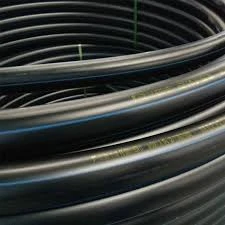ធ្នូ . 01, 2024 22:51 Back to list
hdpe cutting board
The Versatility of HDPE Cutting Boards
When it comes to kitchen essentials, the cutting board has long been a staple for food preparation. Among the various types available, high-density polyethylene (HDPE) cutting boards have gained significant popularity, thanks to their durability, safety, and versatility. This article delves into the benefits of HDPE cutting boards, their applications, and why they should be a part of every kitchen.
What is HDPE?
High-density polyethylene (HDPE) is a thermoplastic polymer made from petroleum. It consists of long chains of molecules, which results in a material that is both robust and lightweight. This makes HDPE an excellent choice for cutting boards, as it provides a surface that is resistant to impact, moisture, and various chemicals.
Benefits of HDPE Cutting Boards
1. Durability One of the standout features of HDPE is its incredible durability. Unlike wooden cutting boards, HDPE doesn't crack or warp with regular use. This means it can withstand the rigors of daily chopping, slicing, and dicing without showing signs of wear and tear.
2. Non-Absorbent HDPE is non-porous, which means it doesn't absorb liquids or odor-causing substances. This quality is crucial in preventing bacteria from thriving in the porous surfaces that are common with wooden or bamboo boards.
3. Safety Food safety is paramount in any kitchen. HDPE is FDA-approved and made from food-grade material, making it safe for use with all types of food. Its smooth surface minimizes the risk of bacteria harboring, ensuring that food remains uncontaminated during preparation.
hdpe cutting board

4. Easy to Clean HDPE cutting boards are easy to clean and maintain. They can be washed in a dishwasher, which is particularly advantageous in bustling kitchen environments where efficiency is key. Additionally, if they develop any staining or odors, a simple mixture of baking soda and water can help restore them to their original condition.
5. Cost-effective Compared to other cutting board materials, HDPE is often more affordable. Given its durability and low maintenance, it represents a smart investment for both home cooks and professional chefs alike.
Versatile Applications
HDPE cutting boards are not just limited to chopping vegetables and meats. Their versatility makes them suitable for a wide range of culinary tasks. For instance, they can be used for
- Meat Preparation Their non-porous surface ensures that juices from raw meats do not seep into the board, promoting food safety. - Cheese and Charcuterie Boards The smooth surface allows for easy cutting and serving of cheeses and cured meats, making them perfect for entertaining. - Baking HDPE boards can also serve as a protective surface for rolling dough. They are easy to clean after flour and other ingredients have been used. - Crafts and DIY Projects Beyond cooking, HDPE boards can find a second life as surfaces for various crafts, such as model making or painting.
Conclusion
In conclusion, HDPE cutting boards are a practical and reliable choice for any kitchen. Their durability, non-absorbent nature, safety features, and ease of cleaning position them as an invaluable tool for both cooking enthusiasts and professional chefs. Whether you’re preparing a holiday feast or just chopping up dinner ingredients, investing in a quality HDPE cutting board will enhance your culinary experience. With their budget-friendly rates and versatility, it’s clear that HDPE cutting boards deserve a place-front and center in kitchen essentials. As kitchens evolve and cooking techniques advance, HDPE boards are likely to remain a steadfast favorite for years to come. So, if you haven't added one to your kitchen collection yet, now is the perfect time to discover the many benefits that HDPE cutting boards have to offer.
-
High-Quality PPR Pipes and Fittings Durable ERA PPR & PVC PPR Solutions
NewsJul.08,2025
-
Black HDPE Cutting Board - Durable, Non-Porous & Food Safe HDPE Plastic Cutting Board
NewsJul.08,2025
-
High-Quality CPVC Panel Durable HDPE & PVC Panels Supplier
NewsJul.08,2025
-
Double PE Welding Rod Supplier - High Strength, Durable & Versatile Welding Solutions
NewsJul.07,2025
-
High-Quality PVC-O Pipe Supplier Durable 75mm PVC Pipe & Connections Leading PVC Pipe Company
NewsJul.07,2025
-
HDPE Drainage Pipe Supplier – Durable & Corrosion-Resistant Solutions
NewsJul.06,2025

